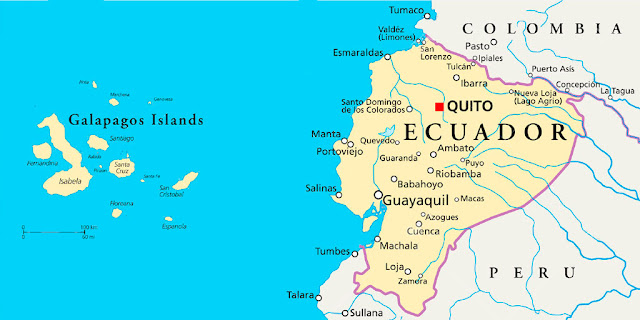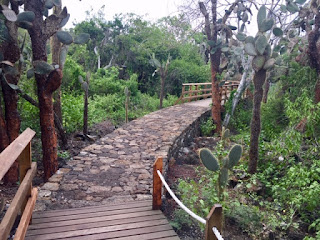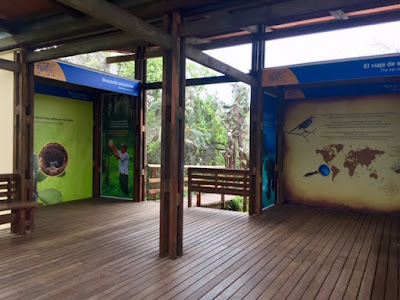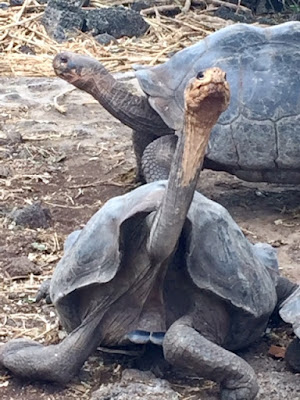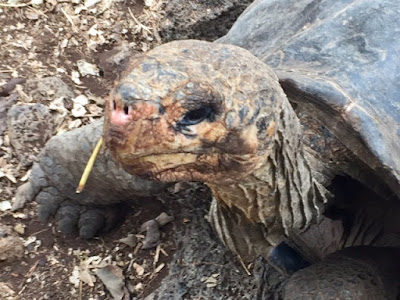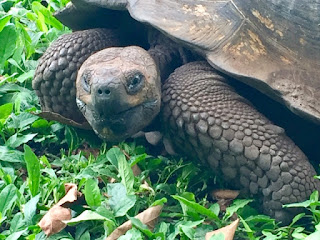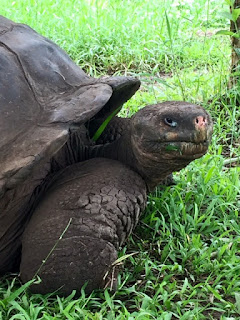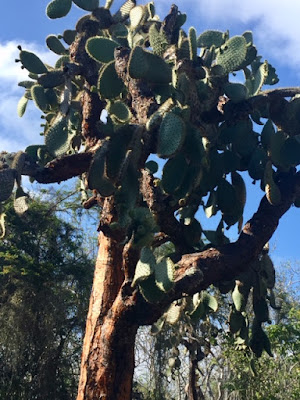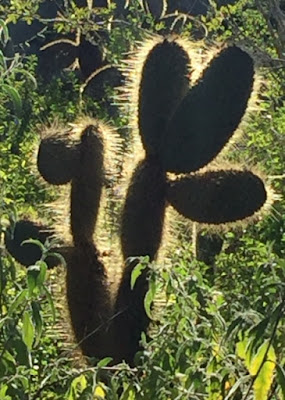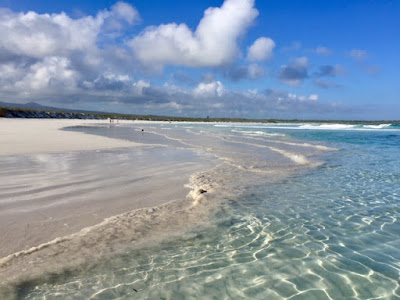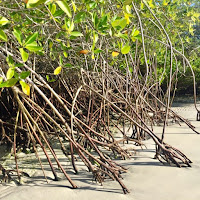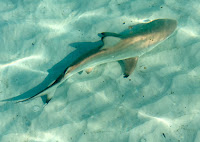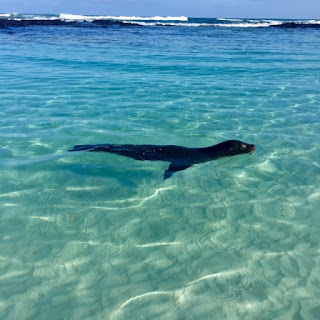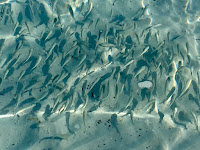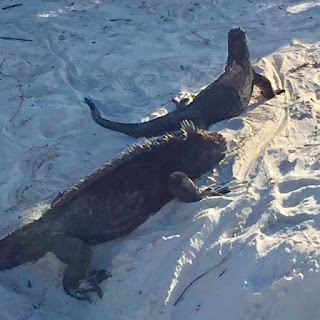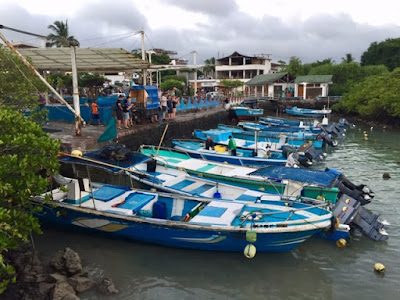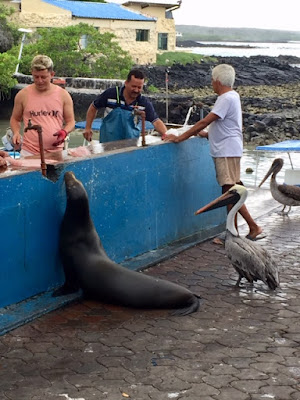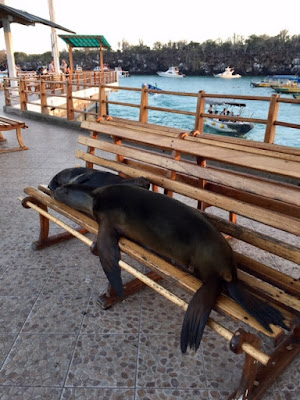In a previous post, I wrote about climbing a 14,000 foot volcano to celebrate this achievement. That was great!
so I need to keep celebrating and
pushing myself into unchartered waters.
One morning, during my yoga practice, it hit me. You see, as I finish up my routine, I often recite a blessing to start my day:
To the north, where my roots and my family ground me to all who I am
To the east, where the sun rises and kisses my skin, inspiring me for each new day
To the south, whose warm and colorful cultures have embraced me in their loving arms
To the west, whose mountains and oceans pull me toward adventure,
challenging me to grow and become all that I can be.
Keeping this last part in mind, I decided I should go west to explore the furthest western point in Ecuador… the Galápagos Islands! (On the map below, you can see my home city of Ibarra. It’s fairly near the Colombia border northeast of Quito.)
The Galápagos Islands are a chain of archipelagic islands lying 570 miles off the coast of Ecuador in the Pacific Ocean. There are currently 13 main islands, 6 smaller islands and over 100 little islets. These islands are the tips of giant underwater volcanos that, as they move across one of Earth’s geologic hotspots, are still growing today. Over time, as plants and animals found their way to the barren volcanic landscape, a variety of ecosystems and habitats were formed. These range from humid mountain forests and grasslands (highest point at 5,600 feet), down through the towering sea cliffs, the rocky shores at sea level, and the coral reefs spanning like skirts around each of the islands. This range of habitats nurture over 9,000 plant and animal species, many found nowhere else in the world. For this reason, the Galápagos Islands have become very famous.
Because the Galápagos Islands sat away from any natural explorer or trade routes, they weren’t even discovered until the 1500’s. For the next two centuries, they served as a hideaway for the Dutch and English buccaneers and then the whalers of the 1800’s. It is known that all of these people exploited the rich animal resources, especially the slow and friendly giant tortoises. Since tortoises can live for up to year without food or water, sailers figured out that they could turn the tortoises upside down and stack them on top of one another in the hold of their ship, ensuring a source of fresh meat along their journey for months to come. One book I read stated that in the early 1800’s, there were over 700 whaling ships in the Pacific and many of them called on the Galápagos for their food source. 1n 1835, Charles Darwin spent 5 weeks on these islands as a young 26 year-old naturalist from England. He was mostly observing the birds and the plants and during his stay, he ate the tortoises too. But while he was there, he took some very important notes, especially concerning some finches. The puzzling thing to him was how the same species of birds had different shaped beaks on different islands. He didn’t put it all together until many years later when he used these notes from his Galápagos visit to publish his groundbreaking “Theory of Evolution”. His theory stated that the birds’ beak shape had evolved to fit their different food sources in each of their individual habitats. The different varieties of Darwin’s Finches, as they are now known around the islands, are still prolific today.
By this point in history, Ecuador had claimed the Galápagos Island for their own and a few brave citizens started making their way there to live. For many years, the islands were mostly inhabited by people who wanted to start utopian societies or penal colonies for the production of goods. Nobody was really concerned about the environment until cruise ship companies started to take notice of the tourism opportunities. Then, things really started to change. Here is a short historical timeline:
1934: Tourists start arriving to the islands by cruise ships
1959: Galápagos National Park was established to protect the resources
1965: Baltra Airport, which was originally a US air base during World War II, opened to the public, which made the islands more accessible by tourists
1978: UNESCO designated Galápagos Islands as a World Heritage Site
1986: The Galápagos Marine Reserve was added to the National Park to protect the surrounding waters
1998: 24-hour electricity came to the island
2000: Telephone and Internet connections came to the island, which enabled tourist companies to pre-book tours
Each year, about 250,000 tourists visit the Galápagos Islands with about 50,000 people residing
full-time on five of the the islands, in large part, to serve the tourist needs.
The Galápagos Islands are known for its wildlife and wild landscapes and are only recommended for those willing to adventure… perfectly suited for me! And since I already live in Ecuador, a birthday trip was the perfect excuse to visit these infamous isles. The majority of visitors experience the Galápagos Island aboard an expensive multi-day cruise, but after much research- and counting my pennies- I decided to stay on two islands and take day trips from there.
Santa Cruz Island
Santa Cruz is the most populated and cosmopolitan island. Walking down the streets of Puerto Ayora, I dodged the employees of tourist agencies trying to sell me a tour, and waiters hustling for my business. I overheard English commonly spoken with a variety of American, Canadian, British and Australian accents. I also heard Spanish and a variety of European languages. I met one group of sailers who had sailed their boat from the Mediterranean, to the Caribbean, through the Panama Canal and were stopping over in the Galápagos on their way back to Australia. Seriously, after living in the quiet mountains of Ecuador, this was all a little overwhelming.
So, if you didn’t know, when you’re a backpacker and trying to travel cheap, a common option is to stay in a dormitory type room with other single travelers. Here, I met a wonderful new friend from Easter Island, Chile and another from Australia.

This research center is most famous for its successful Giant Tortoise breeding program. In an effort to get the tortoise population back to historic levels, they raise baby tortoises for five years before introducing them into the wilds of the other islands. So far, they have successfully introduced over 7,000 tortoises back to the wild with the goal of introducing a total of 50,000 tortoises before 2050.

In this little bay, we swam with schools of fish, sleeping sea lions, and several very large sharks -don’t worry, they are not aggressive here in the Galápagos!
| We also sailed past several colonies of birds nesting on the cliffs. There! Do you see it? People come from around the world to spot a Blue-Footed Booby. |
I also enjoyed shrimp ceviche… every day. This is what I save my pennies for. Served here with patacónes, or fried green bananas.


